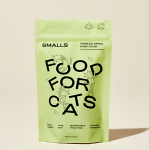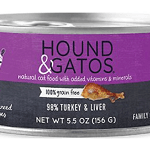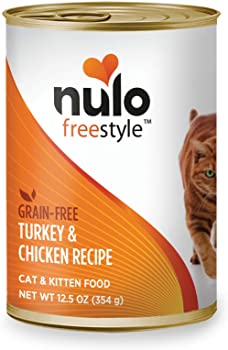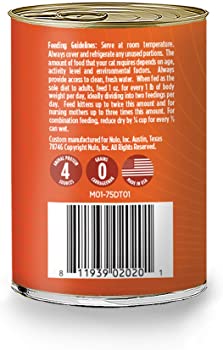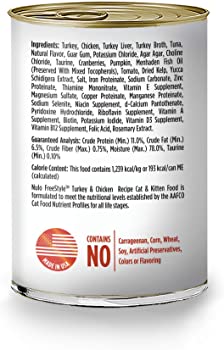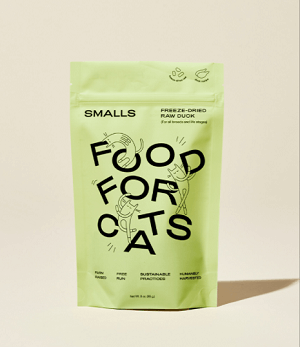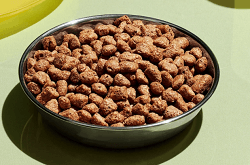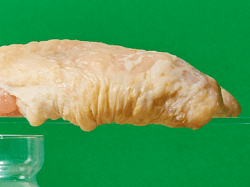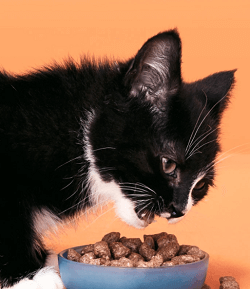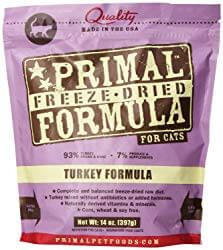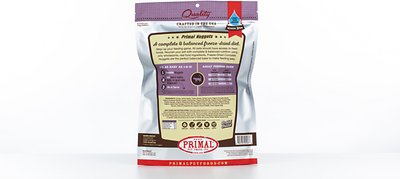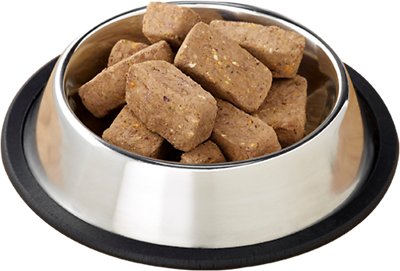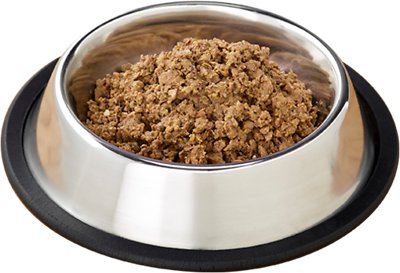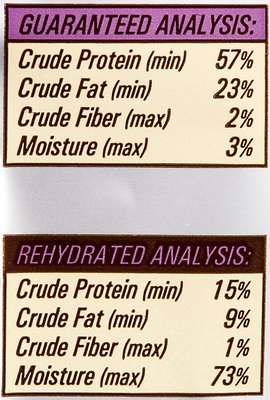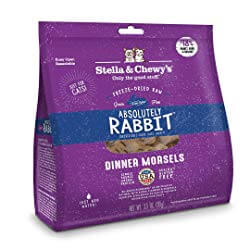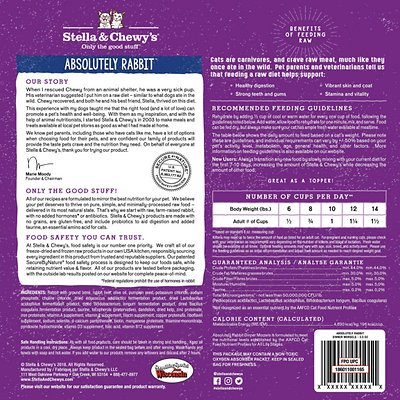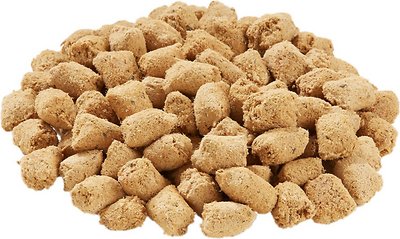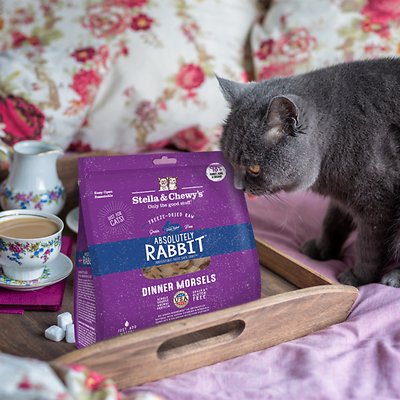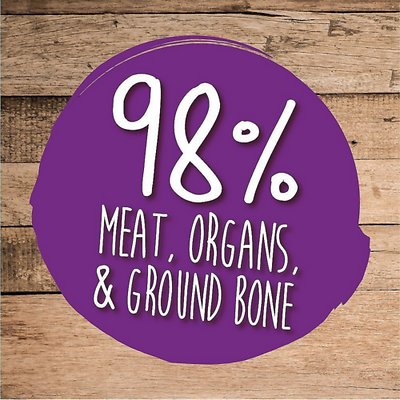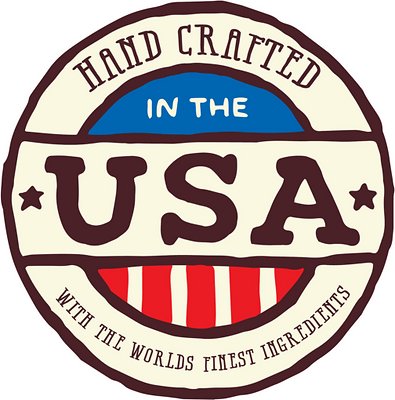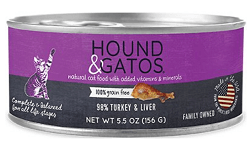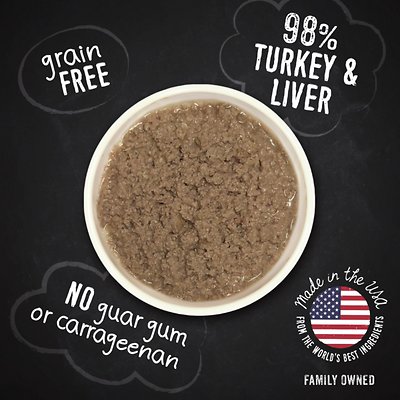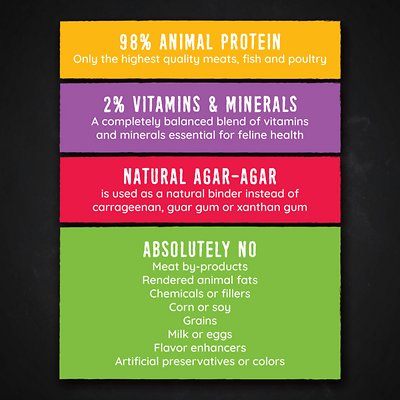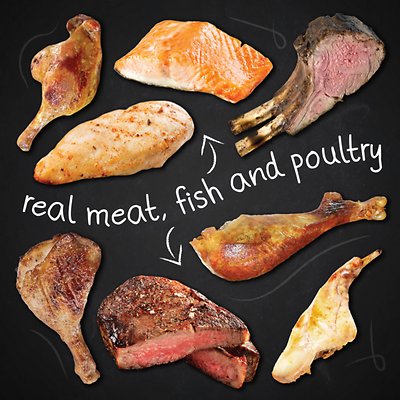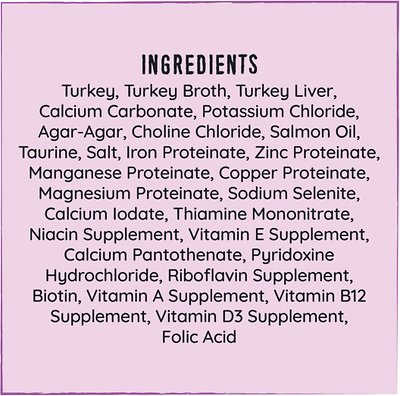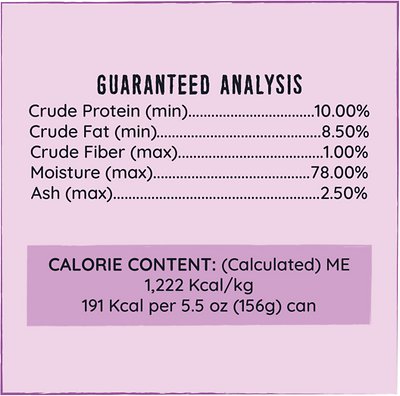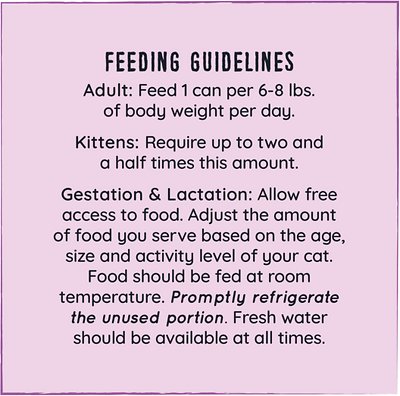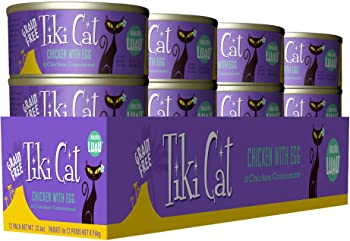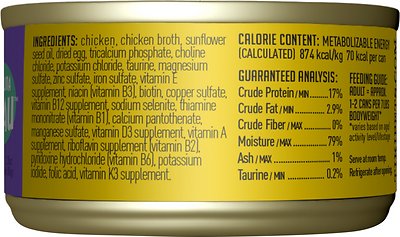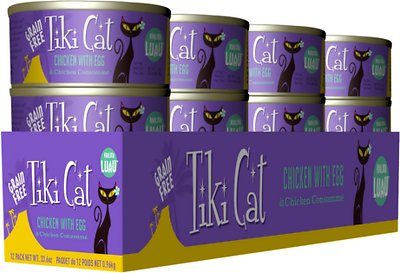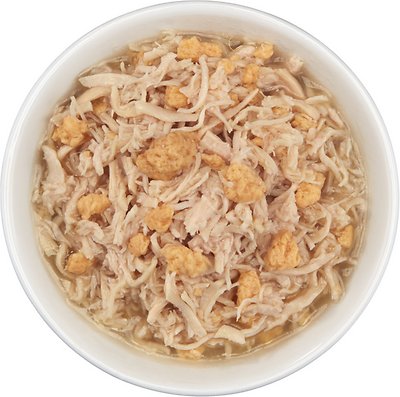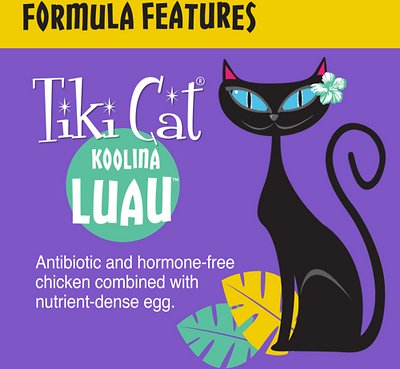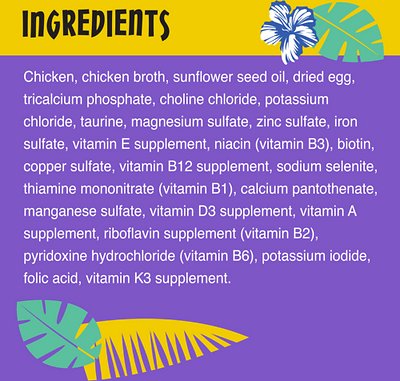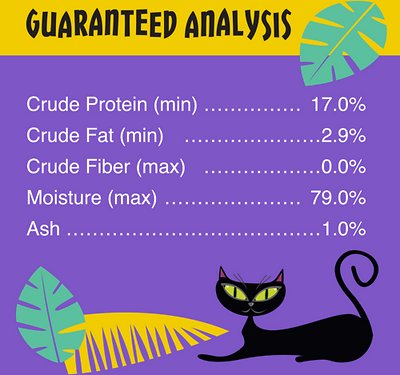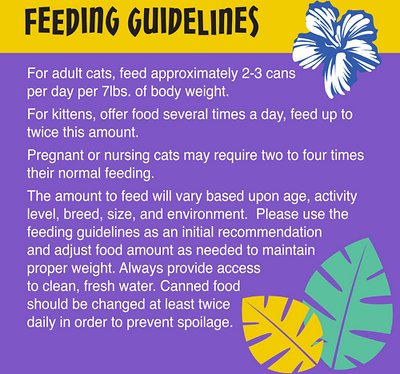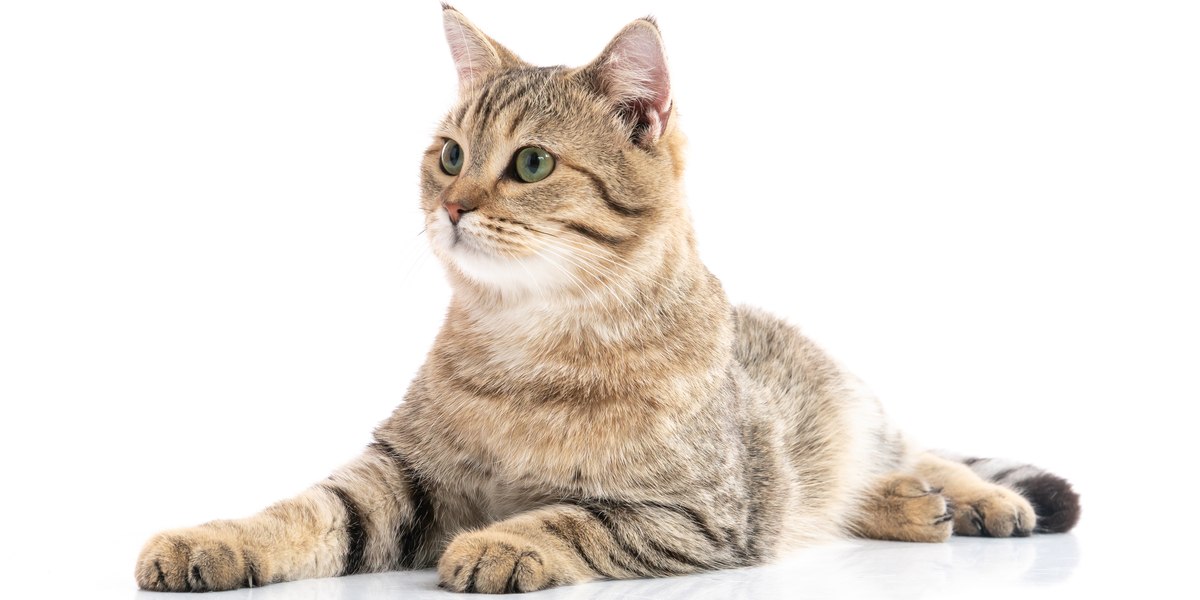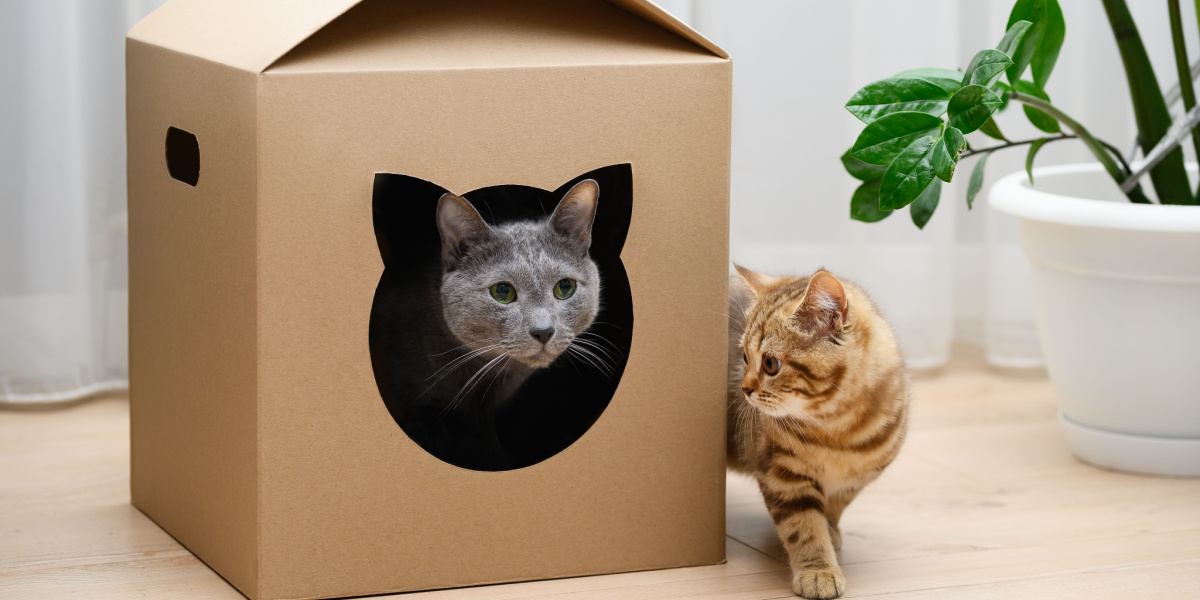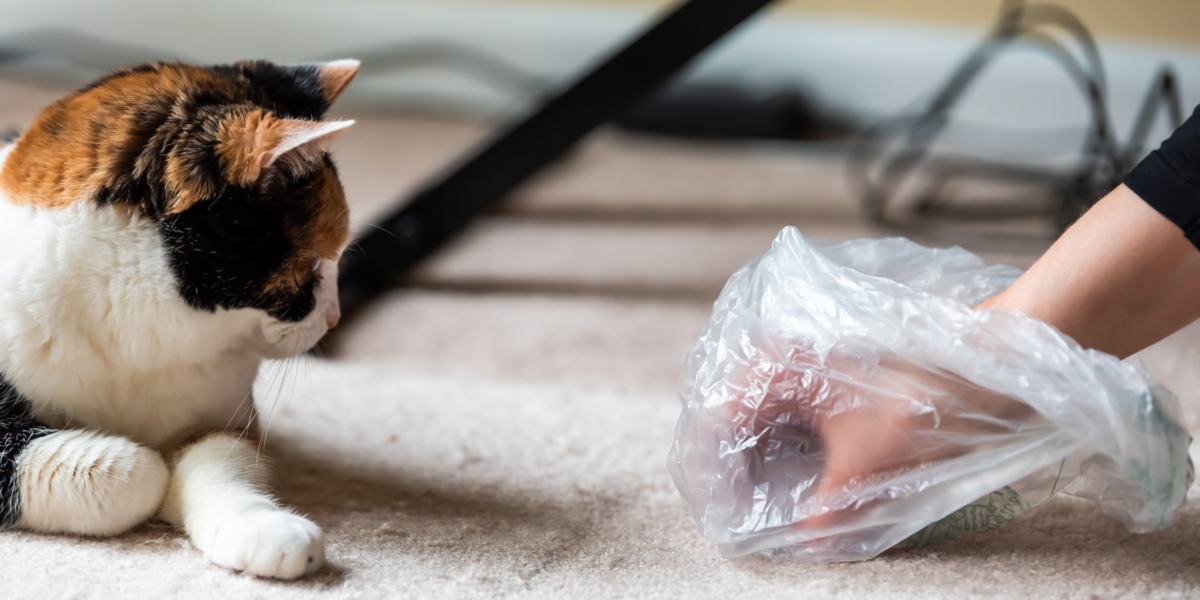The 6 Best Cat Foods For Hairball Control
This page contains affiliate links. We may earn money or products from the companies mentioned in this post through our independently chosen links, which earn us a commission. Learn More
The best cat food for hairball control treats the problem at its source. It’s a highly-digestible, species-appropriate food that helps to keep your cat’s digestion running smoothly.
We recommend Nulo Freestyle Turkey & Chicken Recipe as the overall best cat food for hairball control. It’s a carnivore’s feast that provides plenty of species-appropriate nutrition without a lot of carbohydrates or plant protein. On top of its meat content, it includes a touch of pumpkin, an additive frequently recommended for cats with hairball issues.
This Nulo recipe isn’t right for every cat, so stay tuned for the other products in our list of the best cat food for hairball control. You’ll find freeze-dried foods, options for cats with allergies, and a low-fat food for cats who need to lose weight.
At a Glance: Best Cat Foods For Hairball Control To Buy
We highly recommend looking at the comparison table we have below where we highlighted the features of each product. You’ll also find more detailed information about each product later in the article.
Compare Best Cat Foods For Hairball Control
|
Overall Best
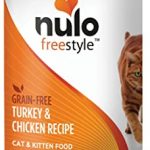
1. Nulo Freestyle Turkey & Chicken Recipe Grain-Free Canned Cat & Kitten Food |
Premium Choice
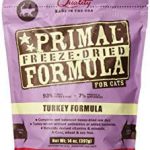
3. Primal Turkey Formula Nuggets Grain-Free Raw Freeze-Dried Cat Food |
Best For Allergies
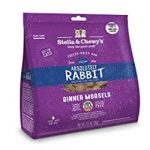
4. Stella & Chewy's Absolutely Rabbit Dinner Morsels Freeze-Dried Raw Cat Food |
Best For Weight Loss
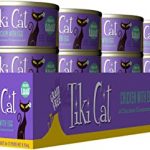
6. Tiki Cat Koolina Luau Chicken with Egg in Chicken Consomme Grain-Free Canned Cat Food |
||
|
Protein
11% Min |
Protein
45% Min |
Protein
59% Min |
Protein
44% Min |
Protein
10% Min |
Protein
17% Min |
|
Fat
6.5% Min |
Fat
20% Min |
Fat
18% Min |
Fat
30% Min |
Fat
8.5% Min |
Fat
2.9% Min |
|
Fiber
0.75% Max |
Fiber
3% Max |
Fiber
4.0% Max |
Fiber
5.0% Max |
Fiber
1.% Max |
Fiber
0% Max |
|
Life Stage
Adult |
Life Stage
Adult |
Life Stage
Adult |
Life Stage
Adult |
Life Stage
Adult |
Life Stage
Adult |
|
Type
Wet/Canned |
Type
Freeze-Dried |
Type
Dry |
Type
Freeze-Dried |
Type
Wet/Canned |
Type
Wet |
|
Made In
United States |
Made In
United States |
Made In
United States |
Made In
United States |
Made In
United States |
Made In
Thailand |
What Is The Best Cat Food For Hairball Control?
Hairballs are a normal part of being an animal that cleans itself—and sometimes other cats—with its tongue. If your cat has hairballs occasionally and is already on a stellar diet, he probably doesn’t need anything beyond an extra brushing session or two.
Hairballs start to spell problems when you’re seeing them more than once a month. Frequent hairballs can be a symptom of digestive problems and gastrointestinal inflammation. When digestive issues are the culprit, the right food may be able to help.
Because Hairballs Can Be A Symptom Of Digestive Problems, The Best Cat Food For Hairball Control Helps To Support Digestive Health.
Whenever you’re feeding a cat with digestive issues, it’s best to give him food that works in harmony with his body. For an obligate carnivore, that translates to a high-protein diet made primarily from animal-sourced ingredients.
A Limited-ingredient Or Hypoallergenic Food May Help.
Like diarrhea, vomiting, and skin issues, excessive hairballs may point to food intolerances or allergies. If you suspect that food sensitivities are responsible for your cat’s hairballs, consider switching to a limited-ingredient or single-protein food. By simplifying your cat’s diet, you make it easier to identify problem ingredients and eliminate them.
Fiber Can Help With Hairball Control, But More Fiber Isn’t Always The Right Choice.
Most cat foods marketed for hairball control are high-fiber products. Fiber can help hair to move through the digestive tract and appears to play a vital role in your cat’s digestion. That said, don’t overestimate the amount of fiber your cat needs.
Though a touch of extra fiber can help to treat your cat’s hairballs, there’s no need to give any cat food loaded to the brim with fiber. If your cat is eating a diet that’s 4% fiber or more and has hairballs anyway, adding more fiber is probably not the solution.
Instead of piling more plant matter into an already vegetable-based diet, start with a carnivore-appropriate foundation. Once your cat is on a fresh, digestible diet without any irritating ingredients and still has hairballs, then you can consider adding more fiber.
Our Top Picks For The Best Cat Foods For Hairball Control
Nulo Freestyle Turkey & Chicken Recipe Grain-Free Canned Cat & Kitten Food
Product Info
- Protein: 11% Min
- Fat: 6.5% Min
- Fiber: 0.75% Max
- Life Stage: Adult
- Type: Wet/Canned
- Made In: United States
Guaranteed Analysis

Dry Matter Basis

- Receives positive reviews from people feeding cats with digestive issues
- Contains pumpkin, which may help with hairball control
- Contains easily-digestible animal protein
- Less expensive than comparable foods
- Features three protein sources and may not be the best choice for cats with food sensitivities
- Contains multiple thickening gums
The food is made with turkey, chicken, and tuna. With three protein sources in the mix, this recipe isn’t the best choice for cats with food sensitivities and allergies.
For those who don’t have any known intolerances, there’s nothing wrong with a three-protein diet. In fact, the food’s mix of protein sources may contribute to its palatability. Cats seem to like the way it tastes.
The food contains smidges of plant ingredients, including pumpkin. Pumpkin is one of the best-known and best-loved remedies for hairballs. Menhaden fish oil serves as a source of omega-3 fatty acids, which help to reduce the inflammation associated with chronic hairballs.
Smalls Freeze-Dried Water Bird
Product Info
- Protein: 45% Min
- Fat: 20% Min
- Fiber: 3% Max
- Life Stage: Adult
- Type: Freeze-Dried
- Made In: United States
Guaranteed Analysis

Dry Matter Basis

- Freeze-dried raw food sent to your door
- Made with real ground duck and duck organs
- High in protein and other natural ingredients
- Some cats dislike the texture of freeze-dried food
- May be more expensive than some foods
This Smalls Freeze-Dried Water Bird is an excellent choice for cats suffering from hairballs because it offers balanced nutrition, clean and simple. This freeze-dried raw food is made with finely ground duck and assorted duck organs, but a limited number of other ingredients. It provides everything your cat needs with nothing extraneous.
Not only does Smalls give your cat the highly digestible nutrition he deserves, but they make things easy on you as well. You’ll receive all the food your cat needs in regular deliveries sent right to your door. What could be better than that?
Primal Turkey Formula Nuggets Grain-Free Raw Freeze-Dried Cat Food
Product Info
- Protein: 59% Min
- Fat: 18% Min
- Fiber: 4.0% Max
- Life Stage: Adult
- Type: Dry
- Made In: United States
Guaranteed Analysis

Dry Matter Basis

- A single-protein food appropriate for cats with food sensitivities and allergies
- Contains a mix of nourishing omega-3 sources
- Rich in highly-digestible animal ingredients
- Low carbohydrate content may help to control inflammation
- Contains some plant ingredients
With 96% of the food’s amino acid content coming from a single animal protein source, it’s a highly-digestible, nourishing option that won’t produce a lot of waste or inflammation.
The food is primarily made from turkey muscle meat, necks, hearts or gizzards, and liver. This meat is USDA human-edible, meaning it is held to higher standards than the feed-grade ingredients used in most cat food.
Instead of synthetic supplements, the food contains an array of fruits and vegetables as nutrient sources. These include organic collard greens, squash, celery, cranberries, and traces of other fruits and vegetables.
A blend of sardine oil and cod liver oil provides omega-3 fatty acids and helps to reduce inflammation.
Stella & Chewy's Absolutely Rabbit Dinner Morsels Freeze-Dried Raw Cat Food
Product Info
- Protein: 44% Min
- Fat: 30% Min
- Fiber: 5.0% Max
- Life Stage: Adult
- Type: Freeze-Dried
- Made In: United States
Guaranteed Analysis

Dry Matter Basis

- Rabbit is a novel protein – ideal for allergic cats
- Contains a fiber source to help control hairballs
- Added probiotics help support digestive health
- Primarily made from highly-digestible ingredients
- May have too much phosphorus for senior cats
This recipe from Stella & Chewy’s fits that description. It is a freeze-dried food made primarily from rabbit meat, organs, and bones.
Rabbit is still a relatively uncommon ingredient in cat food. It’s not a top allergen and is therefore appropriate for most sensitive cats. The food contains pumpkin seeds as a source of fiber, which may help to support healthy digestion and prevent hairballs.
Finally, the food’s inclusion of probiotic organisms helps to support digestive health.
Hound & Gatos 98% Turkey & Liver Formula
Product Info
- Protein: 10% Min
- Fat: 8.5% Min
- Fiber: 1.% Max
- Life Stage: Adult
- Type: Wet/Canned
- Made In: United States
Guaranteed Analysis

Dry Matter Basis

- Made from turkey, which is a good alternative to chicken
- Free from commonly irritating ingredients
- Limited ingredient list
- Highly digestible
- Great for senior cats
- Some cats don’t like the taste or texture
- One of the most expensive foods on the market
The food has a limited-ingredient recipe featuring a lone protein source. Turkey meat and turkey liver are the primary ingredients.
The food contains agar-agar as a binder and features salmon oil as a source of omega-3 fatty acids.
Altogether, the food has everything your cat needs for healthy digestion. It has the muscle meat and organs cats require, a source of fiber, and anti-inflammatory fat.
If you want a single-protein food, this is one to consider. The food’s biggest drawback is a palatability issue. Though most reviewers like it and many say it was the solution to their cats’ digestive problems, some say their cats refused to eat it. The food’s taste and texture tend to be divisive.
Tiki Cat Koolina Luau Chicken with Egg in Chicken Consomme Grain-Free Canned Cat Food
Product Info
- Protein: 17% Min
- Fat: 2.9% Min
- Fiber: 0% Max
- Life Stage: Adult
- Type: Wet
- Made In: Thailand
Guaranteed Analysis

Dry Matter Basis

- The streamlined, ultra-digestible ingredient list may support GI health
- Low carbohydrate content may reduce inflammation
- Contains egg as a source of choline and lecithin, which help to prevent hairball formation
- Low fat content can help overweight cats slim down
- Made with chicken and egg, two of the most common cat food allergens
- Features plant-sourced oil rather than nourishing animal fat
- Zero fiber content
It contains sunflower seed oil as a source of fat. Ideally, your cat’s food should contain animal-sourced fat and oils like chicken fat and salmon oil. These ingredients have the fatty acid profile cats need and are more nourishing than plant fats.
Other than chicken, egg, and sunflower seed oil, there isn’t much going on in this food. It’s fortified with vitamins, minerals, and amino acids that make it nutritionally complete. It contains chicken broth, but unlike similar foods, it’s not thickened with any gums or starches.
In general, this food is a good option for cats with food sensitivities, hairball problems, and digestive issues in general.
Note, however, that it doesn’t have any fiber content. You may want to add psyllium, inulin, or other type of fiber supplement.
Finding Great Food Isn’t Always The End Of The Hairball Control Story.
The best cat food for hairball control helps—a lot—but even after you’ve found a diet that works for your cat, you may still have to try other tactics to reduce his hairballs. Here are a few ways you can go beyond diet to ease your cat’s hairball issues.
Brush Off Some Of That Hair Before It Can Become A Hairball.
If your cat doesn’t swallow hair, he can’t develop hairballs. You can help your cat out by giving him a good brushing every few days, getting that loose hair off his body and into the trash before it comes close to forming into a hairball.
Less Shedding Means Fewer Hairballs.
Shedding is inevitable for most cats, but cats with healthier coats tend to do it less. A great diet and the right supplements can help to keep your cat’s coat in top condition and shedding as little as possible.
On top of feeding one of the best cat food for hairball control, you can promote skin and coat health by introducing an omega-3 fatty acid supplement and ruling out any sensitivities or health conditions that cause excessive shedding.
Consider Giving Your Cat Hairball Remedies.
These products are made with oils, waxes, petroleum jelly, or a mix of these ingredients. They lubricate the hairs and help to keep them from fusing into a hairball. They usually work well, but there’s no need to keep your cat on a life-long regimen of gut lubricants. Consider them a short-term solution while you work on finding a diet and routine that solve the problem for good.
In addition to these cat-specific products, you can try giving your cat butter, coconut oil, or a dab of petroleum jelly.

